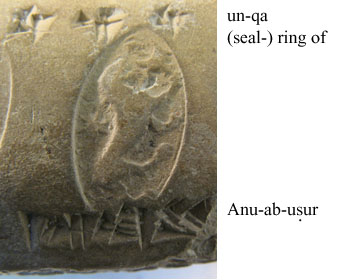Images
The edges of all legal texts from Hellenistic Uruk were impressed with the seals of the principals, guarantors and witnesses to each transaction. Although the vast majority of these seal impressions are anepigraphic, they all preserve motifs known from the Babylonian and Hellenistic artistic traditions. The seal impressions contribute visual appeal to cuneiform tablets already distinguished by their relatively large size, rectangular shape, flat surfaces and the clarity and depth of the ductus.

When considered as a complete object, the sealed cuneiform tablet contributes important evidence from both image and text to the identification of individuals in Hellenistic Uruk. The body of the text and the caption surrounding each seal impression preserve the name of each participant.

Most individuals bear Babylonian names, others Greek, and still others bear "double-names," identified in the text as "X whose second name is Y." The catalogue and attributes of names known at Hellenistic Uruk can be explored in the NAMES section of HBTIN. Consideration of the linguistic background of an individual's name in conjunction with the cultural background of the motives on his or her seal(s) affords a more nuanced understanding of the social environment of the small Mesopotamian community in Hellenistic Uruk.
Photographs and line-drawings of the seal impressions on Hellenistic Uruk legal documents are accessible through the Images Catalogue which may be searched on a variety of criteria, including motif. The contributions seal images make to our understanding of the aesthetic, cultural and social environment of Hellenistic Uruk are discussed under the heading "The Images in Context".